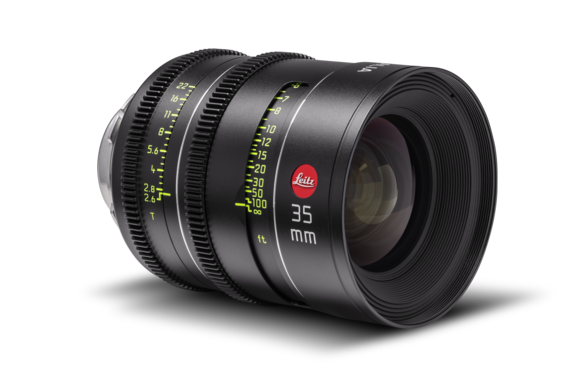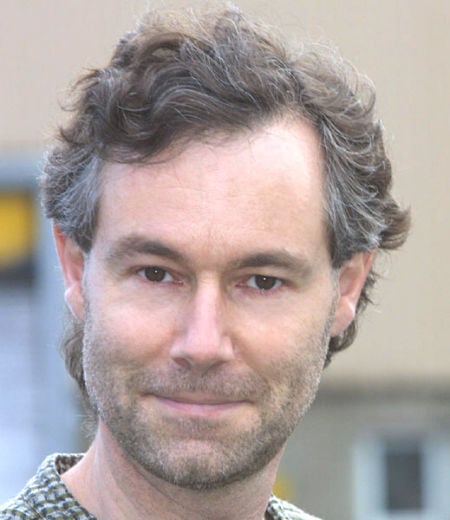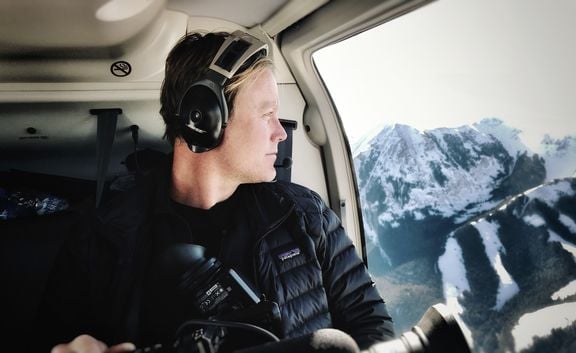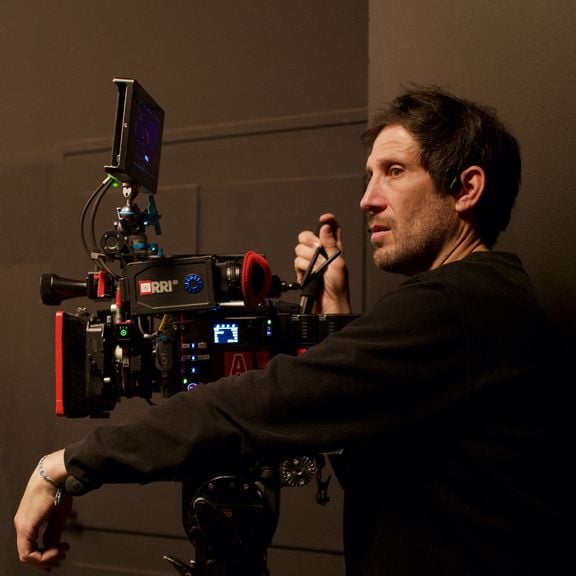Sonali Chugani Pushes Creative Boundaries with Leitz HUGO
Cherry Valley (2025)
Sonali Chugani embodies the passion and aesthetic of the next generation of filmmakers with a voracious appetite for images and a passion for exploring tools and techniques in search of a unique and powerful voice. Her cinematography work exudes the essence of youth with a technical skill born from experience.
Seth Emmons: How did you first get interested in cinematography?
Sonali Chugani: I think it started with an anxiety I had in high school about wanting to capture my own life, wanting to be able to remember my own life, almost nostalgia before the fact. I started making little vlogs in early high school with a Flip Video camera, family vacations and stuff like that. I found myself getting really attached to the way the videos looked and felt and started trying to make my vlogs as cinematic as possible.
I moved up to a little Nikon, then a Canon T6i, and eventually a Sony A7iii. I started learning Final Cut Pro on my own and downloading LUT plug-ins and transition packs, stuff that I totally cringe at now. <laughter>. At the time there were YouTubers who were making funny vlogs and becoming famous, but I was more inspired by people making cinematic travel videos, like speed ramps and slow motion of the Hong Kong skyline.
I wanted to see my life that way! I wanted to shoot my friends in front of the skyline and make it look amazing! Viewing filmmaking through that lens has translated into the type of work I do now. I’m always trying to capture something that means something to me and putting my personal stamp on it, my view of the world.
Did you pursue film school after high school?
I did. I applied to a bunch of film schools and didn’t get into any of them. That brought me down so much because I felt unwanted and convinced myself that film wasn’t for me. I grew up in Orange County and went to San Diego State and pursued communications, but I was actually neglecting all my classes because I was still out making films on my own. After a while I realized that maybe this is what I’m meant to do and switched my major to film.
During the course of that program I deepened my understanding of how to tell a story with cinema, which led me into becoming a DP. Before that I was so focused on the tools and technology and trying to make great pictures. I was obsessed with what camera I was using, what color grade I was doing, and I wasn’t really thinking about putting together cohesive stories.
I had one professor who I will shout out named Greg Durbin. You always have that one professor who changes your life and for me that was Durbin. I only had him in the second semester of senior year for my thesis class, but he taught me so much. I had so many questions. I also felt a lot of uncertainty about becoming a DP when almost every DP I saw was a boy. He gave me so much of his time and I really appreciate it. Durbin actually introduced me to Joel Deutsch at Evidence Cameras, which is how you and I got connected.
Towards the end of college, I met one of my closest collaborators, Meg Darbourne. We started a female-led production company together called No Storage Productions. It all started as a result of us having no space to store any of our little passion projects we made during covid, but over time it has become the most important piece of my growth not only as a DP, but as a female filmmaker in this industry.
I think that one of the most difficult things about this career path is the feeling of being alone at certain times, when work is slow or when we are comparing each other to others we see on social media etc. Having a family in my production company keeps me feeling like I am always supported and growing with some insanely talented people, no matter how hard everything is on the outside. It is a space that has truly brought me the best collaborators. We all live in LA now and are making movies together and growing together. A lot of the work I have shot has been through No Storage.

Let’s talk about your recent work.
I’ve been doing a lot of music videos recently, which I love. I’ve found a lot of my style through shooting music videos and found some really good collaborators. I have a few directors I work with regularly and feel like we share the same brain. I love narrative as well. That’s definitely a long-term goal of mine and I’ve been really blessed to get a sprinkling of those projects in between.
All the projects I’ve been working on have been things that make me happy. They come to me with the right purpose and fit well with my vision and aesthetic.
How would you describe your aesthetic?
That’s a tough question. Definitely coming of age, grounded in realism but with an elevated reality. A bit more dramatic, a little stronger, higher stakes. I like to try and see the world through a heightened, romanticized lens. At the core reality can kind of suck at times, but if you can elevate the cool moments and blend those elements to where it still feels real, that’s what I’m aiming for.
I love interesting compositions, I love shooting handheld, but using color in a saturated, poppy way, having elements that pop and create a vibrancy is what I like to shoot right now. One DP whose style I really like is Sean Price Williams. His colors always blow me away. The handheld is very intense, but I love it. It still feels real. That inspires me a lot to keep searching for my own voice.
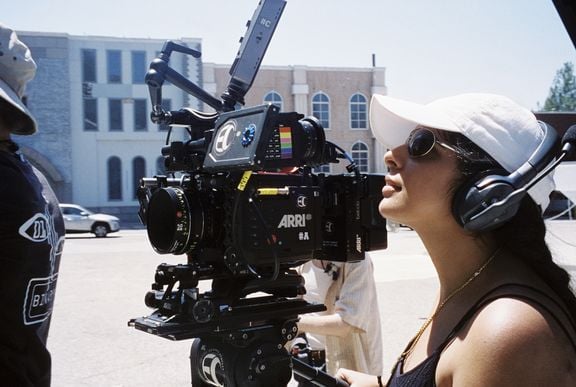
You recently did a couple projects using the Leitz HUGO lenses. Can you tell me about those?
I’ll start with a short film called “Cherry Valley.” It’s a story about two high school friends going to college and one girl has feelings for her best friend. At the core it’s about not having identity in your coming of age process and the things people will do as a result.
I was looking for inspiration that was slice-of-life, grittier coming of age things, but still had color pops. The director and I looked at “How to Have Sex,” directed by Molly Manning Walker and shot by Nicolas Canniccioni. Also, Claire Mathon’s work with Celine Sciamma like “Portrait of a Lady on Fire” and “Petite Maman.”
So I went to Joel at Evidence Cameras, it’s my go-to camera rental, and asked what he would recommend. I knew I wanted to use the ARRI Alexa LF but had no idea on the lenses and he handed me the Leitz HUGOs and said, “Try these. We just got them from B&H. You’re going to be the first to shoot on them.” That was super exciting.
I feel like the HUGOs have the exact amount of color I wanted but still feel real. There is something about the way they are on faces specifically, something about the fall off, that gave me the feeling I was after. It was very flattering and soft, but still real. There’s so many small things about a lens's characteristics that add up to that bigger feeling, and these just felt so good. I literally put them on the camera and was like, “Oh my God, I’ve found this new aesthetic that I didn’t know before.”
It was perfect for the story we were telling and combined all my inspirations while still feeling like it was my voice in this film. It had enough saturation and gave me a sense of realism but still had elements of the surreal. They were vibrant but dark and gave that dreaminess in faces that wasn’t overdone and didn’t have halation like some of the older lenses I’ve used. It wasn’t vintage, but it still had a soft, dreamy quality.
Were there any focal lengths you gravitated toward?
I was really into tight compositions on this project. I feel like there’s this newer style of a lot of wide angles, but this story needed to be shoved into the viewer’s face and make them as uncomfortable as the characters are. 35mm was the widest but we mainly lived in the 50mm and 75mm world. For one scene we were in a small bathroom and I stayed on the 75mm the whole time because it was the most intimate confrontation between the characters and I was able to be right in their faces and have this beautiful depth as a result. I like the modern style and will go wider, but it was the right choice for this film. It was especially fun operating handheld, just two actors and me in the bathroom, feeling out when to pan the camera and responding organically. I really like to operate handheld and I’ve started working out to be able to keep up with this lifestyle.
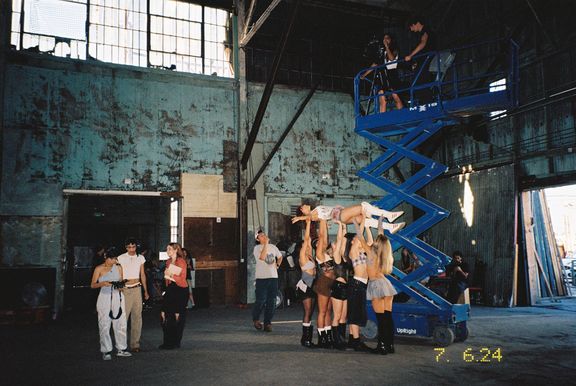
What project was after that?
After that was a music video called “Heaven,” which I shot about a month later. I went back to Joel and said, “I need those lenses again.” I had shot something in between on a vintage lens set, which was good, but didn’t give the same feeling. It was good, but it just didn’t speak to my aesthetic in the same way. This was a different director, but she liked the look of “Cherry Valley” and was happy to go with the HUGOs.
It was really cool to put the HUGOs into the music video space with its different intentionality, which is more about making it look beautiful for the artist. We were going for a more girly kind of saturated colorful world, but it still needed to feel mature. An elevated, deeper look. These lenses gave me the perfect blend of coming of age with vibrant, not too warm or too saturated.
I actually love that they’re not vintage. They’re a little clean but still have character, and you don’t find that a lot in newer glass. They did exactly what I wanted them to do. They were beautiful. This time I stayed wider as we were doing a lot of Steadicam stuff. I also brought a zoom, but when I put it on camera I was like, “No, this is not correct. I can’t do it.” I could see the difference, so we stayed with the HUGOs for the whole shoot.
This was a very cool project. We were shooting on a backlot so I put up a big half soft frost overhead, which is my favorite diffusion. We keyed her with a mirror on one side and added some negative on the other side for contrast. She also had body oil on which made her glow. It looked so good! I had two face closeups that day and was like, “Dang!” The fall off was perfect. I love them. These lenses are in my toolkit now and they’re going to help me get that last piece of the puzzle.
Did you use Evidence Cameras for all these jobs?
I did. When I got to LA professor Durbin introduced me to Joel. Joel had gone to SDSU like 20 years ago and had Durbin as well. The first time I went to Evidence was just to get lenses. I hadn’t met Joel before. I was fresh out of film school and shooting a short film. I was getting the camera from the school and had like $200 in budget for the lenses. I asked Joel what he had and he offered me some Super Speeds.
I got to set about 7pm that night. We had to start shooting at 10pm. I immediately realized that I hadn’t checked the mount on the lenses. They were EF and our camera was PL mount. It was Friday evening; Evidence was closed and I was freaking out.
I called Durbin and got Joel’s cell phone number and was like, “What do I do?” Joel drove all the way back to Evidence and got another set of lenses out for me. I had just met him that day. I thought it was so sweet that he would do that. I’ve done jobs out of other rental houses when the producer required it, but Evidence Cameras has been a safe, supportive space for me from day one.
As a young DP there’s the challenge of imposter syndrome. There’s the challenge of being a girl in this industry. I’ve had to learn a lot during preps and Joel and his team have always made it comfortable and been so helpful and non-judgmental. I’ve gotten to know Joel pretty well now and I know he really believes in my journey. That article he did in his newsletter, the Instagram posts. It’s so sweet. I feel lucky to have met him. Plus that San Diego thread is still there.
Connecting with people who can help you has been such a big part of my growth. I know so many people who are afraid to reach out and ask questions. I try to remember that everyone’s been in my shoes at some point in their career. Now I’m getting to return that favor to people younger than me who reach out asking how to do this or that. That loop is really cool, and if you don’t participate in it I don’t think you’re going to succeed. We all need people in our lives who can help us out from time to time.

Overview
DoP Sonali Chugani
Cherry Valley
2025 | movie
DoP Jonathan Ricquebourg
Director Michel Hazanavicius
Leitz lens THALIA 65
Camera ARRI Alexa Mini LF
Production Companies Getaway Films | La Classe Américaine | SK Global | Blue Light | France 2 Cinéma | Alcatraz Films | Gaga | Pan Européenne Distribution | SofiTVciné 9 | Canal+ | Ciné+ | France Télévisions | La Région Île-de-France
Distribution BIM Distribuzione | Betafilm | Falcon Pictures | Film Europe | Gaga | Gusto entertainment | Independenta | JMH | Kino Lorber | MCF | Movie Cloud | Nashe Kino | Nos Audiovisuais | O'Brother Distribution | Pan Distribution | Signature Entertainment | Times Vision | Umbrella Entertainment | Vértigo | Front Row Filmed Entertainment | Raketa Releasing | Teleview International | Weltkino Filmverleih | Angel Films
Award Nominations 2022 Sitges - Catalonian International Film Festival
Equipment Supplier Next Shot
Country France
Lens used
THALIA 65
Legacy
Crafted to shape great stories. One set of simply exceptional lenses for unlimited scope.
